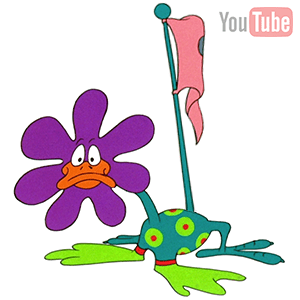The Salon des Refusés, French for ‘exhibition of rejects,’ is generally an exhibition of works rejected by the jury of the official Paris Salon, but the term is most famously used to refer to the Salon des Refusés of 1863. During this time, Paris was a breeding ground for artists of all forms, poets, painters, and sculptors. Paris was the place to be and the capital of the art world.
Any artist who wanted to be recognized, at that time, was required to have exhibited in a Salon, or to have gone to school in France. Being accepted into these Salons was a matter of survival for some artists; reputations and careers could be started or broken, based solely upon acceptance into these exhibits. Today by extension, salon des refusés refers to any exhibition of works rejected from a juried art show.
read more »
Salon des Refusés
The Steve Allen Theater
The Steve Allen Theater at the Center for Inquiry (CFI) Los Angeles is a multidisciplinary resident fringe theater and theater of the absurd in Hollywood developed and helmed by Founding Artistic Director, Amit Itelman. The Center for Inquiry is a nonprofit group founded by Carl Sagan and Isaac Asimov to promote science and secular humanism. When paranormal investigator James Underdown became the Executive Director of CFI West in 2003, he named the theater after Center for Inquiry supporter and television personality Steve Allen and offered Itelman an opportunity to define an artistic vision for the space.
Itelman has booked interdisciplinary acts (music, comedy and theater) that strike a brainy and idiosyncratic chord. ‘A kind of theater that bounces off the walls.’ Itelman’s artistic credo reflects CFI’s mission of ‘not accepting things as they are’ an unlikely lab for some of the freshest, strangest work in town…The bar for eccentricity may be pretty high in Hollywood, but the Steve Allen Theater clears it easily.’
Fringe Theater
Fringe theatre is theater that is not of the mainstream. The term comes from the Edinburgh Festival Fringe, which was named by Robert Kemp, who described the unofficial companies performing at the same time as the second Edinburgh International Festival (1948) as a ‘fringe,’ writing: ‘Round the fringe of official Festival drama, there seems to be more private enterprise than before.’ The term has since been adopted by the Edinburgh Festival Fringe and thence by alternative theaters and alternative theater festivals.
In London, the Fringe is the term given to small scale theatres, many of them located above pubs, and the equivalent to New York’s Off-Broadway or Off-Off-Broadway theatres. There are also many unjuried theater festivals which are often called fringe festivals. These festivals, such as the Edinburgh Festival Fringe and Adelaide Fringe Festival, permit artists to produce a wide variety of works.
read more »
Theater of the Absurd
The Theatre of the Absurd is a designation for particular plays of absurdist fiction, written by a number of primarily European playwrights in the late 1940s, 1950s, and 1960s, as well as to the style of theater which has evolved from their work. Their work expressed the belief that, in a godless universe, human existence has no meaning or purpose and therefore all communication breaks down.
Logical construction and argument gives way to irrational and illogical speech and to its ultimate conclusion, silence. Plays within this group are absurd in that they focus not on logical acts, realistic occurrences, or traditional character development; they, instead, focus on human beings trapped in an incomprehensible world subject to any occurrence, no matter how illogical. The theme of incomprehensibility is coupled with the inadequacy of language to form meaningful human connections.
read more »
Duck Amuck
Duck Amuck is a surreal animated cartoon directed by Chuck Jones and produced by Warner Bros. Cartoons. The short was released in early 1953 by The Vitaphone Corporation, the short subject division of Warner Bros. Pictures, as part of the Merrie Melodies series. It stars Daffy Duck, who is tormented by a seemingly sadistic, initially unseen animator, who constantly changes Daffy’s locations, clothing, voice, physical appearance and even shape. Pandemonium reigns throughout the cartoon as Daffy attempts to steer the action back to some kind of normality, only for the animator to either ignore him or, more frequently, to over-literally interpret his increasingly frantic demands. Mel Blanc performed the voices. It was directed by Chuck Jones with a story by Michael Maltese. The film contains many examples of self-referential humor, breaking the fourth wall.
According to director Chuck Jones, this film demonstrated for the first time that animation can create characters with a recognizable personality, independent of their appearance, milieu, or voice. Although in the end, the animator is revealed to be Daffy’s rival Bugs Bunny (who famously declares ‘Ain’t I a stinker?’), according to Jones the ending is just for comedic value: Jones (the director) is speaking to the audience directly, asking ‘Who is Daffy Duck anyway? Would you recognize him if I did this to him? What if he didn’t live in the woods? Didn’t live anywhere? What if he had no voice? No face? What if he wasn’t even a duck anymore?’ In all cases, it is obvious that Daffy is still Daffy; not all cartoon characters can claim such distinctive personality.







